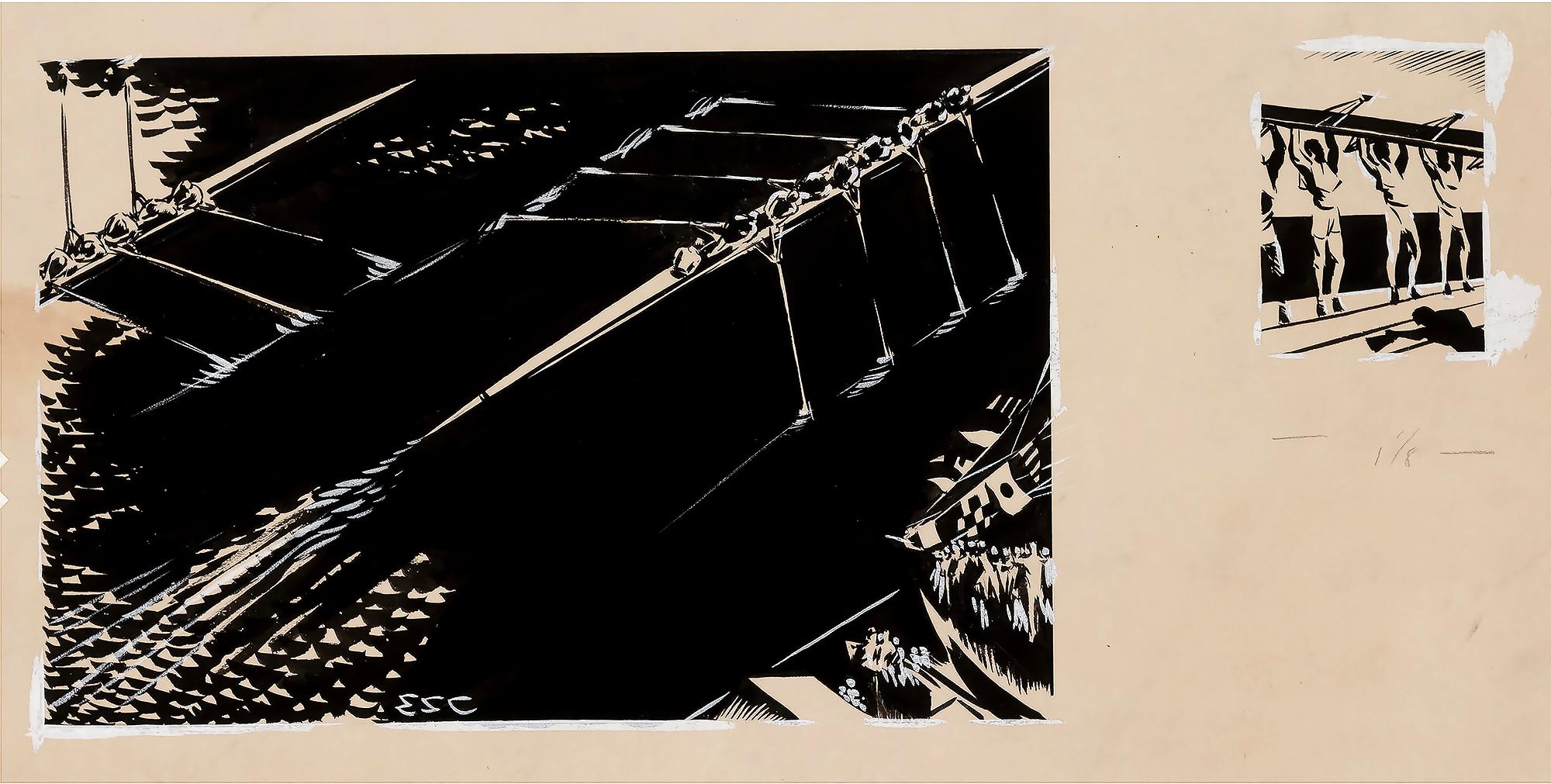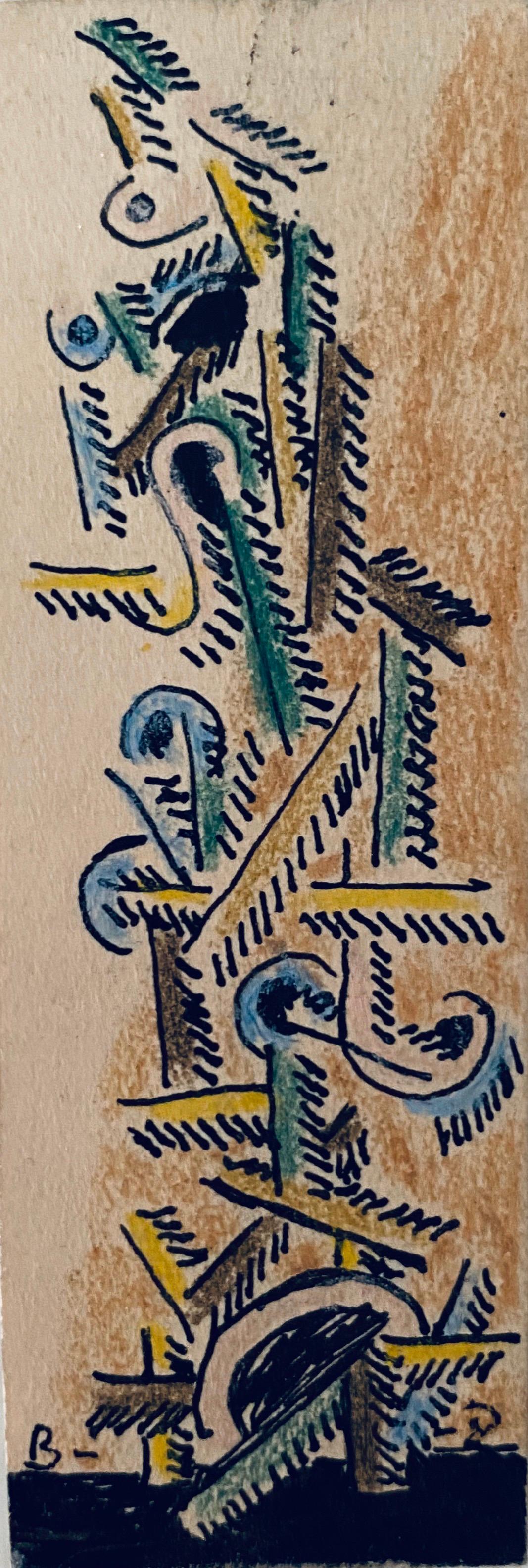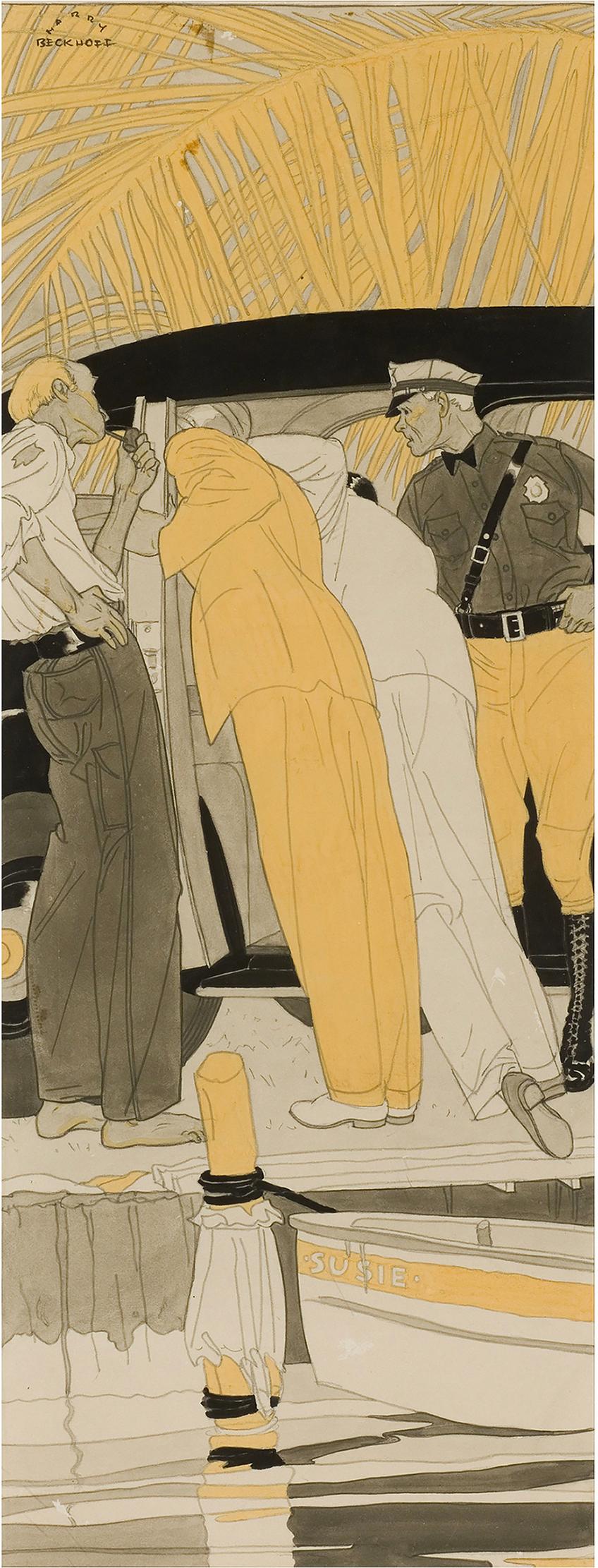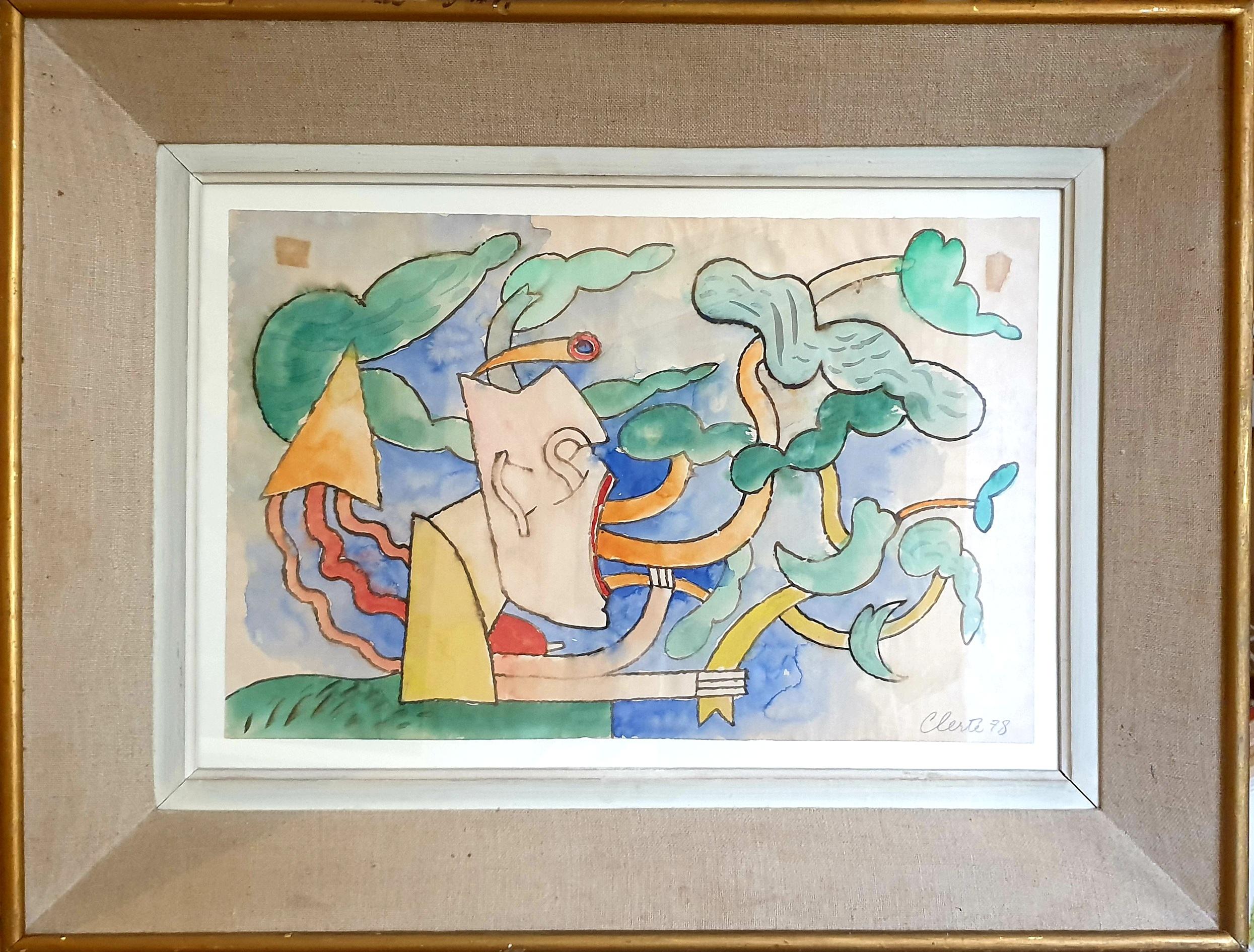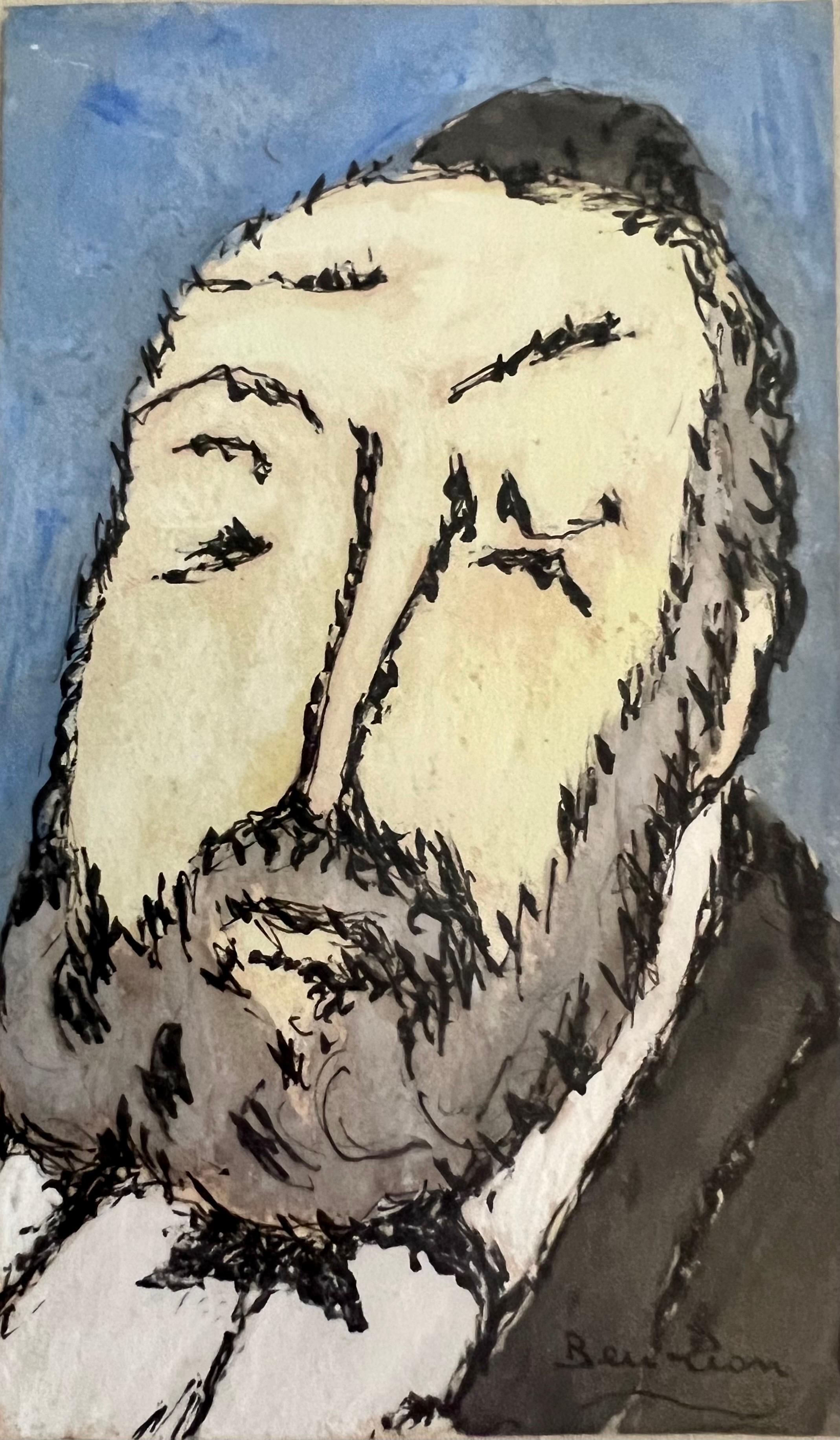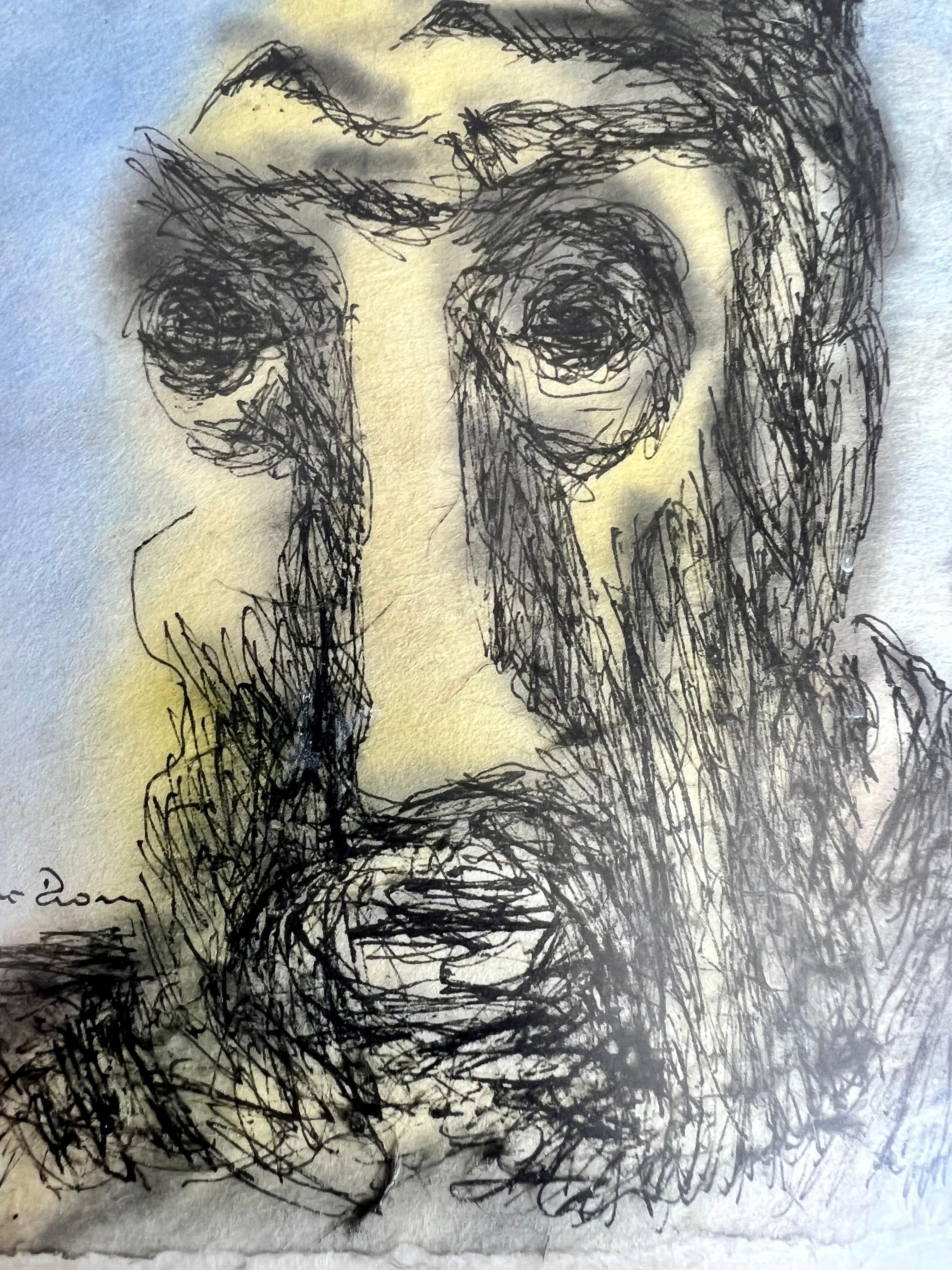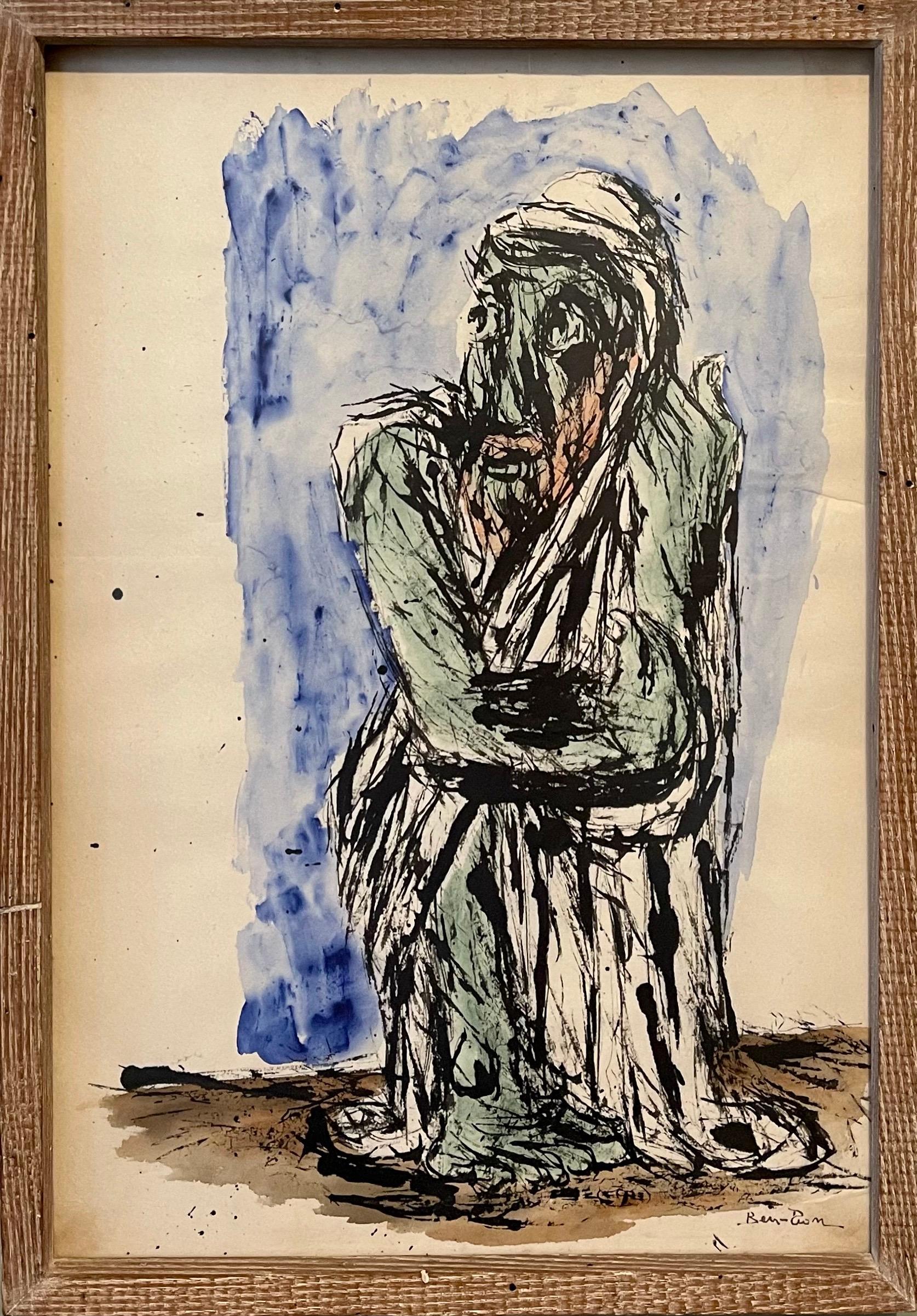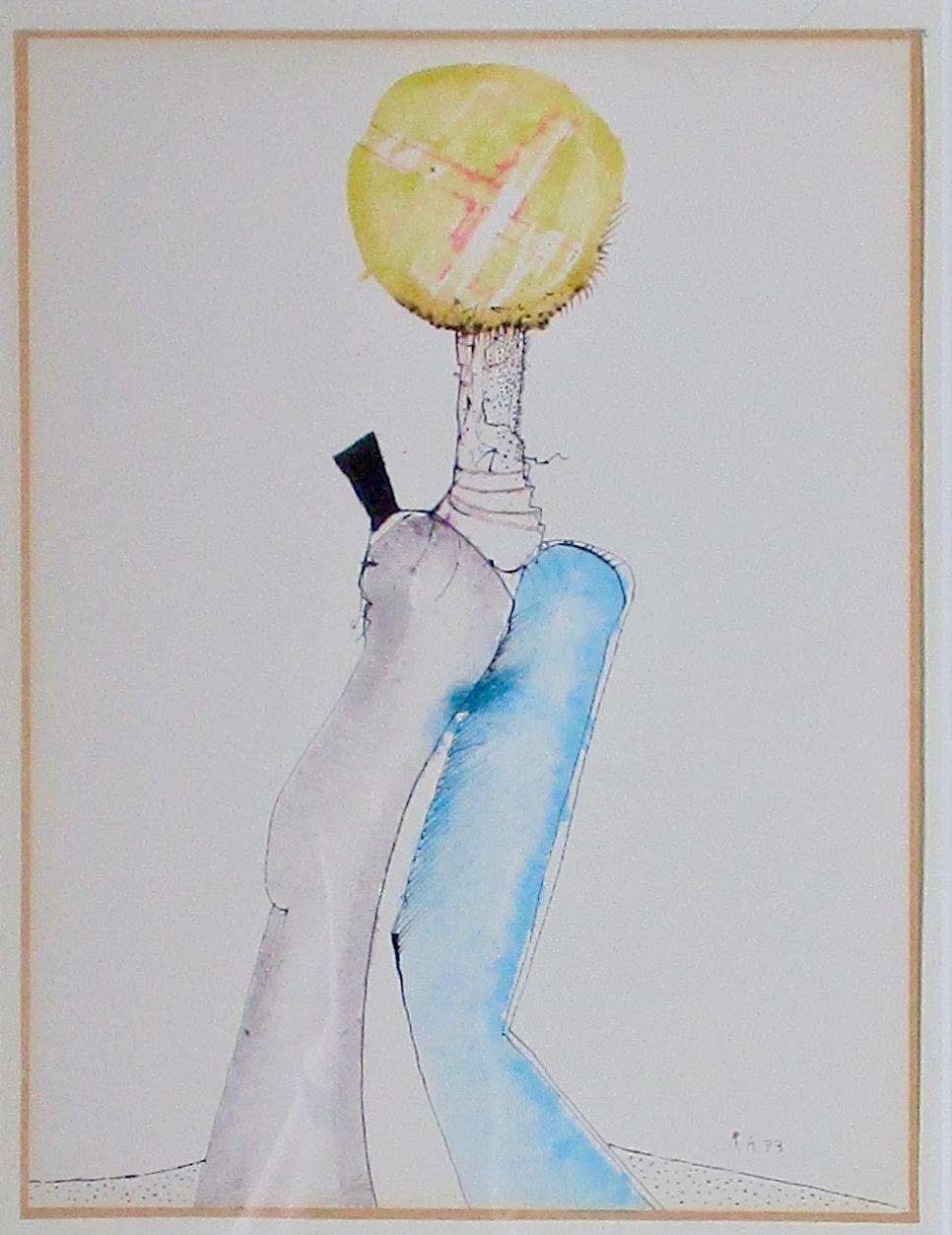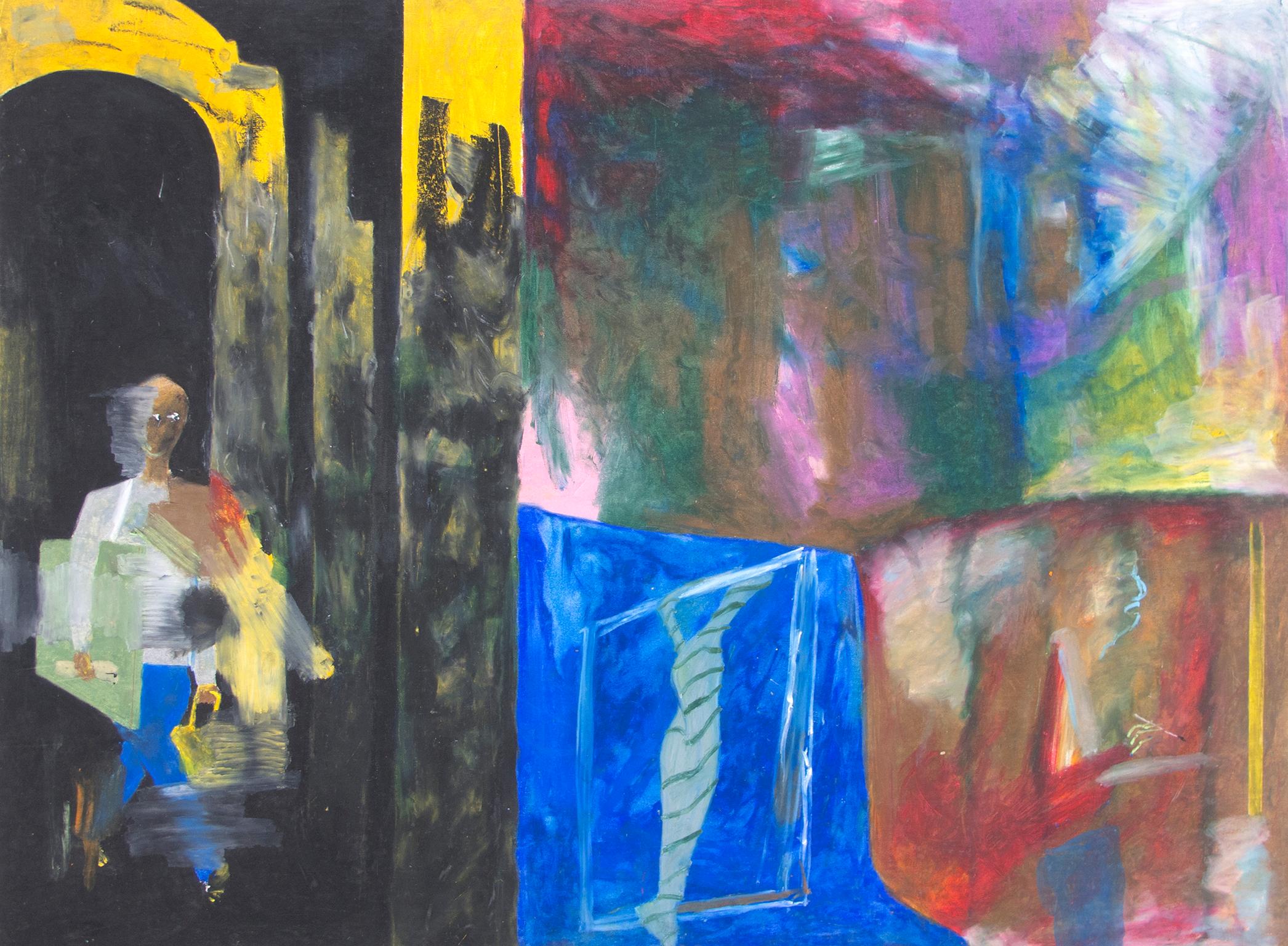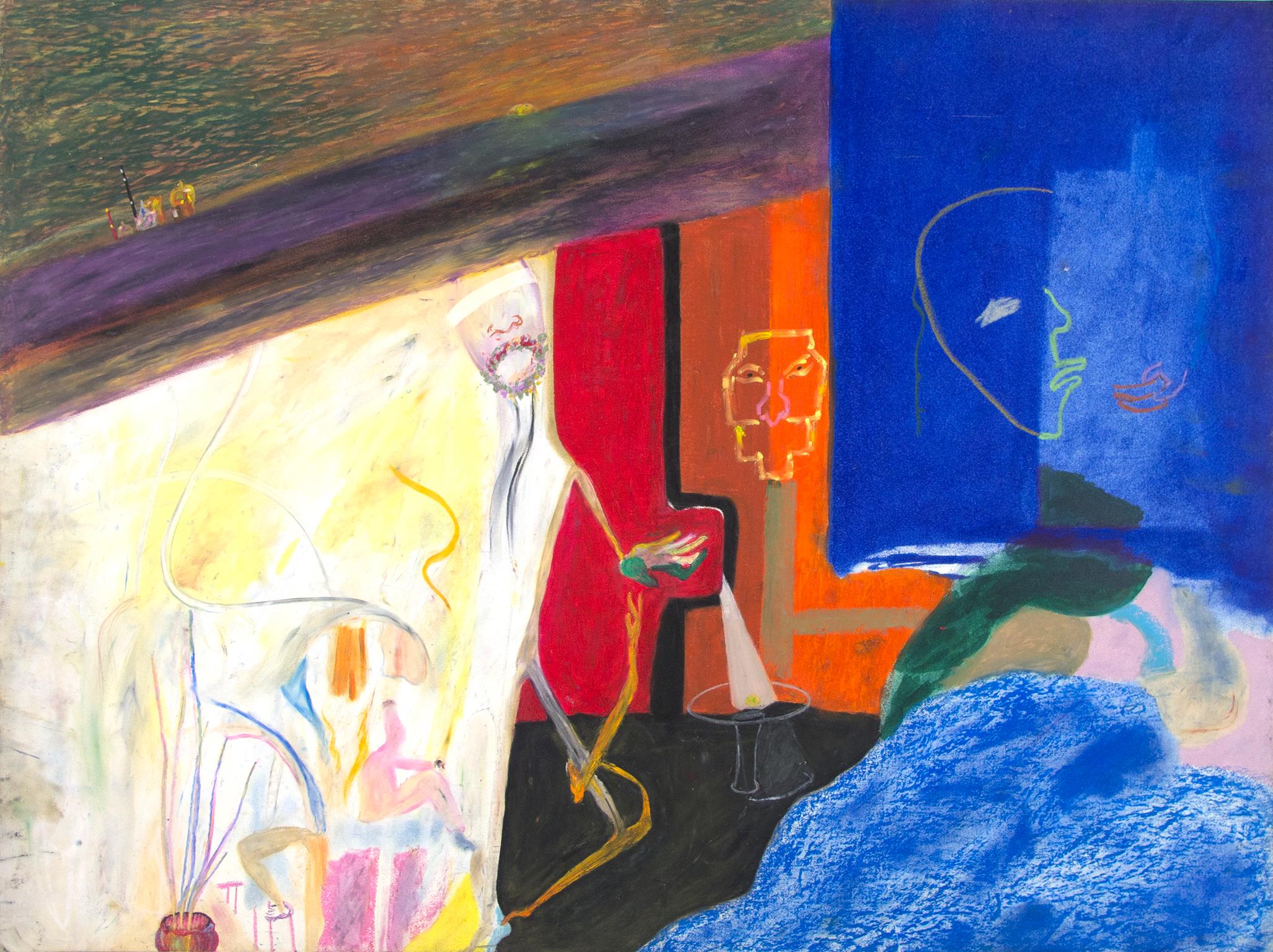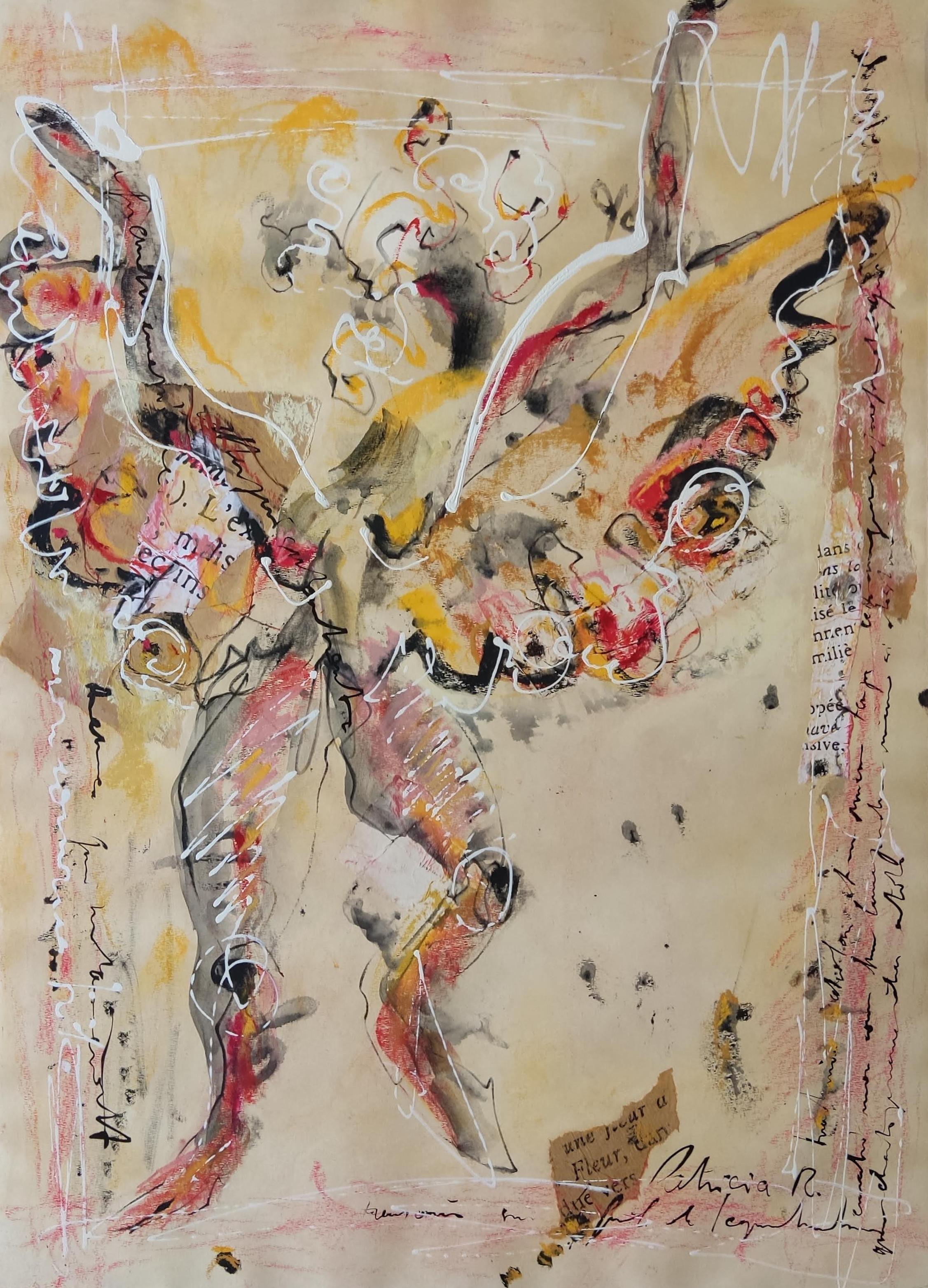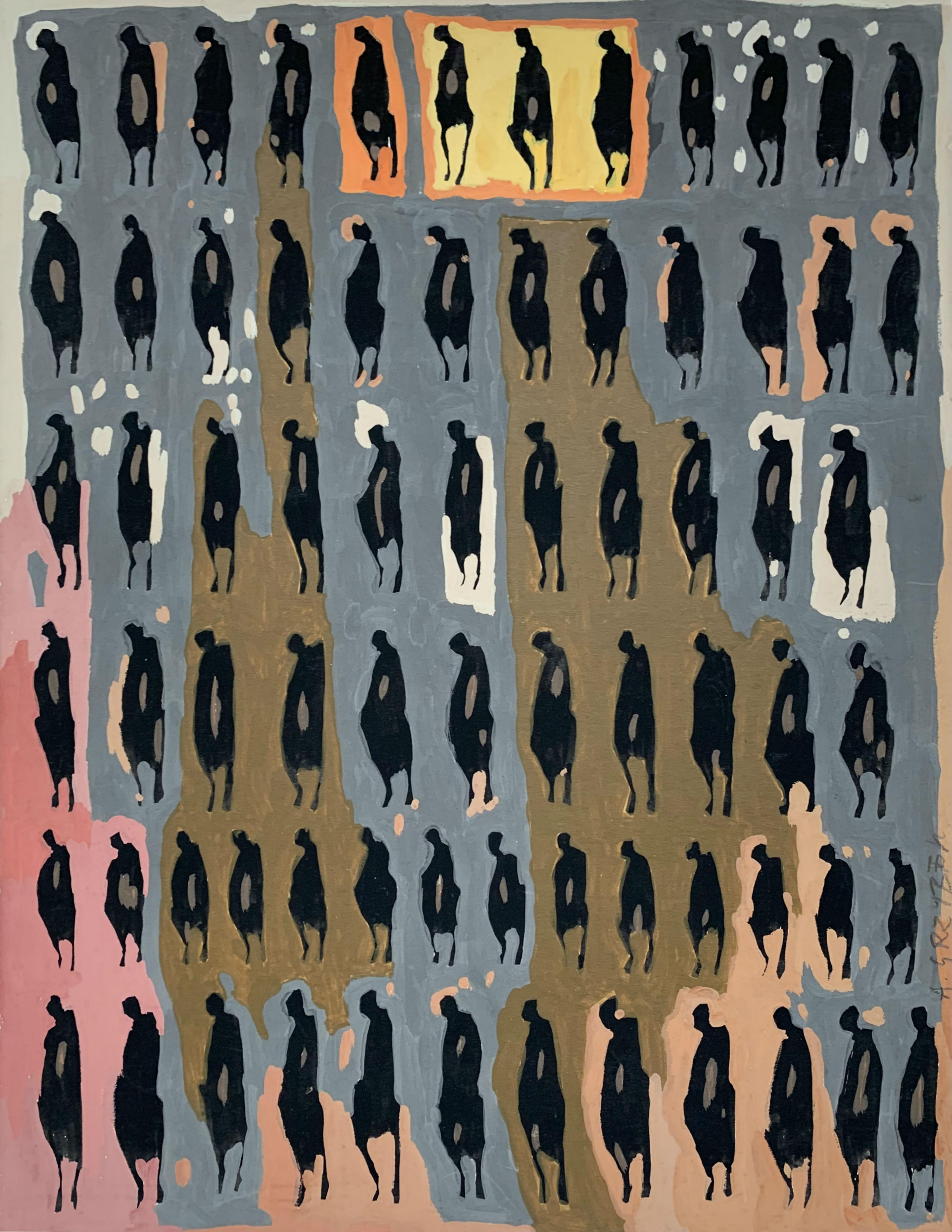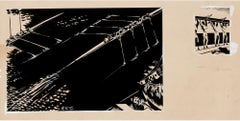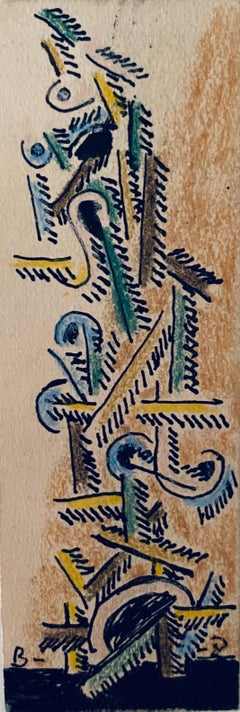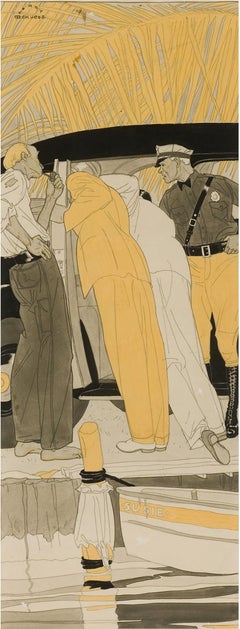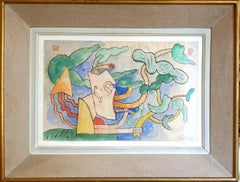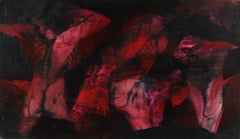
"Inferno Figures" Expressionist Abstract in Red Ink, 1960s
View Similar Items
1 of 4
Clyde I. Seavey Jr."Inferno Figures" Expressionist Abstract in Red Ink, 1960s1960s
1960s
About the Item
- Creator:Clyde I. Seavey Jr.
- Creation Year:1960s
- Dimensions:Height: 18 in (45.72 cm)Width: 24 in (60.96 cm)
- Medium:
- Movement & Style:
- Period:
- Condition:Staining throughout.
- Gallery Location:San Francisco, CA
- Reference Number:Seller: 04321stDibs: LU29821025073
Authenticity Guarantee
In the unlikely event there’s an issue with an item’s authenticity, contact us within 1 year for a full refund. DetailsMoney-Back Guarantee
If your item is not as described, is damaged in transit, or does not arrive, contact us within 7 days for a full refund. Details24-Hour Cancellation
You have a 24-hour grace period in which to reconsider your purchase, with no questions asked.Vetted Professional Sellers
Our world-class sellers must adhere to strict standards for service and quality, maintaining the integrity of our listings.Price-Match Guarantee
If you find that a seller listed the same item for a lower price elsewhere, we’ll match it.Trusted Global Delivery
Our best-in-class carrier network provides specialized shipping options worldwide, including custom delivery.You May Also Like
Rowing Sculling Team Regatta, Life Magazine - African American Illustrator
By E. Simms Campbell
Located in Miami, FL
E. Simms Campbell was the first African-American illustrator/ cartoonist published in nationally distributed, slick magazines, he created Esky, the familiar pop-eyed mascot of Esquire. This early work of 1930 was done on assignment for an interior page of Life Magazine. It features two Rowing teams engaged in spirited competition with cheering onlookers. This is a highly stylized black-and-white illustration and is masterfully executed. The work is composed of two illustrations, 6 x 9 inches and 2-3/4 x 2 inches respectively. It is initialed center bottow ESC. unframed
Campbell left the University of Chicago and transferred to and received his degree from the Chicago Art Institute.[3]
Professional career
During a job as a railroad dining-car waiter, Campbell sometimes drew caricatures of the train passengers, and one of those, impressed by Campbell's talent, gave him a job in a St. Louis art studio, Triad Studios.
He spent two years at Triad Studios before moving to New York City in 1929. A month afterward, he found work with the small advertising firm, Munig Studios, and began taking classes at the National Academy of Design.During this time, he contributed to various magazines, notably Life, & Judge
Following the suggestion of cartoonist Russell Patterson to focus on good girl art, Campbell created his "Harem Girls", a series of watercolor cartoons that attracted attention in the first issue of Esquire, debuting in 1933. Campbell's artwork was in almost every issue of Esquire from 1933 to 1958 and he was the creator of its continuing mascot, the cartoon character in a silk top hat.
He also contributed to The Chicagoan, Cosmopolitan, Ebony, The New Yorker, Playboy, Opportunity: A Journal of Negro Life, Pictorial Review, and Redbook.
His commercial artwork for advertising included illustrations for Barbasol, Springmaid, and Hart Schaffner...
Category
1930s Figurative Drawings and Watercolors
Materials
Ink, Illustration Board, Gouache, Pencil
Abstract Drawing Watercolor Painting Totem Column Jewish American Modernist WPA
By Ben-Zion Weinman
Located in Surfside, FL
Miniature Abstract Totem. Signed with initials.
Provenance: Virginia Field, Arts administrator; New York, N.Y. Assistant director for Asia House gallery. (she was friends with John v...
Category
Mid-20th Century Expressionist Abstract Drawings and Watercolors
Materials
Ink, Watercolor
Searching the Car - Desaturated Colors Muted Warm Yellows and Grey
By Harry Beckhoff
Located in Miami, FL
This Harry Beckhoff illustration is masterfully rendered and intricately designed in line and wash. It's as abstract as it's representational with its graphic style, clean lines, and flat patterning. Every element in the composition works in harmony without a line out of place. The flat and abstract nature of the work rivals that of the great modernist painters of the 1930s.
Perhaps this was done for a major newsstand magazine like Collier's.
Although he studied with Dean Cornwell and Harvey Dunn, he didn't pursue the style of painterly brushstrokes and impastos. Instead, he defined his forms with flat shapes, whose internal forms are defined by thin lines. The emphasis is more on silhouette and line than it is on texture and lighting. Beckhoff also described his work as having been influenced by illustrators like Pierre Brissaud...
Category
1930s Figurative Drawings and Watercolors
Materials
Watercolor, Illustration Board
'Mother Nature', Lyrical Surrealist Abstract Watercolour on Paper.
Located in Cotignac, FR
Mid-century lyrical surrealist abstract watercolour on paper by French artist Jean Clerté, signed and dated bottom right. Presented in mid-century frame.
Jean Clerté , born in 1930 in Saint-Savin-sur-Gartempe in Vienne, is a French painter, engraver, draftsman, watercolourist and sculptor . This work is a great example of his more humorous and expressive work influenced by Alechinsky from the late 1960s onwards. There is a light playfulness and yet the watercolours are more vivid than his previous palette.
Jean Clerté works in series. His sequential narrations testify both to a youthful spontaneity and to a perfect mastery in the distribution of forms and images on the painted surface. The narration is not only an accumulation of juxtaposed fragments and symbols, it forms a whole, it takes on and gives meaning. In general, we can say of Clerté that he practices an “eco-art” that feeds on primary hungers: the feeling of being united with nature, the vegetable, the mineral, the aquatic. In his colourful canvases, his inks, his boxes, his objects, like a shaman on the path of his dreams, the painter Clerté mounts an assault on beasts and demons, elves and gnomes. From the Poitevin marshes to the tropical forests emerges a fauna caught in the meanders of a design that marvels at the appearance of these grotesque idols.
Jean Clerté began to draw and paint at a very young age, and at the age of 15 he enrolled at the École des Beaux-Arts in Poitiers. Then in 1949, curious about the capital, he moved to Paris. Having very few financial resources, he could not continue his studies at first, worked as a model to survive, and met other artists; he was then admitted to the studio of Ossip Zadkine and, from 1952, he was also able to study engraving at Atelier 17 of Stanley William Hayter, an English engraver and printer living in Paris associated in the 1930s with surrealism.
At the end of the 1960s, he worked alongside Pierre Alechinsky, founding member of the Cobra movement, engraving Alechinsky's originals, benefiting from his advice, and discovering acrylic as a medium.
From 1976, Jean Clerté became associate professor at Hayter. Clerté had taught previously, in 1971 at the Salzburg Summer University and in 1972 he gave courses at the Paris-Sorbonne University . In 1981, he was appointed professor at the School of Decorative Arts , where he had Maïlys Seydoux-Dumas as a student and, from 1983 to 1988, he was Alechinsky's assistant professor at the Paris School of Fine Arts.
His first works are part of the current of lyrical abstraction, and are nourished by impressions of nature (landscape motifs, e.g. forest fires, waterscapes), then around 1968, encouraged by Alechinsky, he rejects abstraction, and his work becomes more figurative with expressive and humorous elements. From this period his colours are more subdued, often with pastel tones, he works on series. Jean Clerté has created a world in a space where drawing, painting, objects participate in a playful figuration. From his drawings were born sculptures and sometimes mobiles (Le Moulin à dessin). If it is the artist who makes astonishing, polychrome, whimsical “toys”, it is the painter who appeals to adults through his caustic and satirical humour.
His first exhibitions in France took place at the Galerie Massol , then at the Galerie Pascal...
Category
Mid-20th Century Expressionist Figurative Drawings and Watercolors
Materials
Paper, Watercolor
Ben ZIon Expressionist Judaica Rabbi Watercolor Painting Jewish Modernist WPA
By Ben-Zion Weinman
Located in Surfside, FL
Frame measures 13.5 X 11.5
Paper measures 6.5 X 4 inches
Hand signed lower right
Watercolor painting of prophet or Rabbi, Judaica artwork
Born in 1897, Ben-Zion Weinman celebrated h...
Category
Mid-20th Century Expressionist Abstract Drawings and Watercolors
Materials
Paper, Watercolor
Ben ZIon Expressionist Judaica Rabbi Watercolor Painting Jewish Modernist WPA
By Ben-Zion Weinman
Located in Surfside, FL
Frame measures 13.5 X 11.5
Paper measures 6.5 X 5 inches
Hand signed lower right
Watercolor painting of prophet or Rabbi, Judaica artwork
Born in 1897, Ben-Zion Weinman celebrated h...
Category
Mid-20th Century Expressionist Abstract Drawings and Watercolors
Materials
Paper, Watercolor
